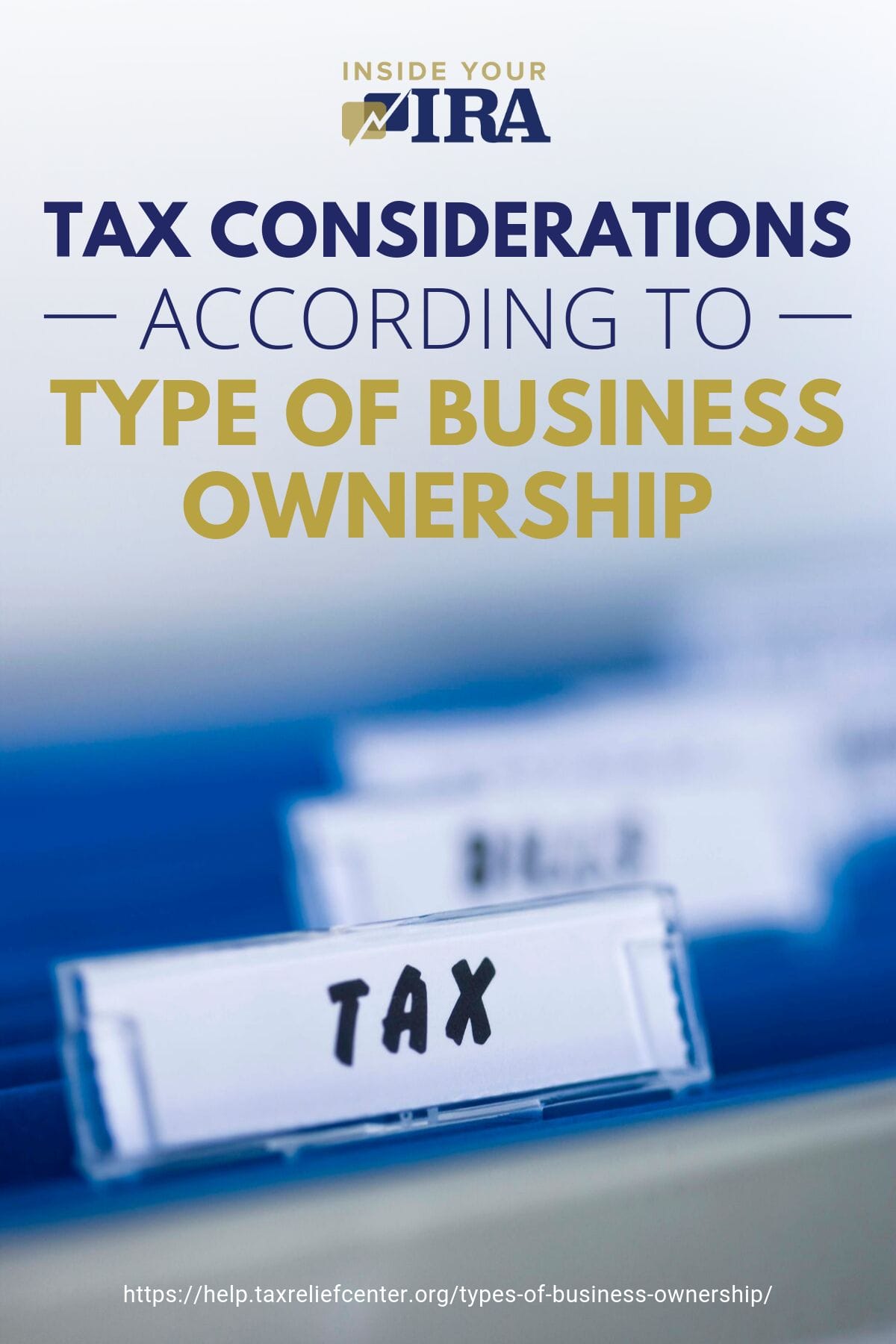A taxpayer should know the different types of business ownership in order to apply the proper tax amounts and forms to the IRS.
RELATED: Tax Refund Offset Reversal: Step By Step Guide
In this article:
- What Are the Different Types of Business Ownership?
- Who Forms Part of the Tax Structure in the Business?
- Which Relevant Tax Forms Apply to Which Business Structure?
- How Can a Taxpayer Utilize The Types of Business Ownership?
Types of Business Ownership and How Each Deals with the IRS
What Are the Different Types of Business Ownership?
Fact: The legal structure of a business affects tax levels, primarily through business expense deductibles, as well as other regulatory guidelines on who is classified as an employee or freelancer.
There are five main business ownership structures taxpayers commonly adhere to:
- A very common structure, a sole proprietorship structure only has one member, which is the taxpayer. Freelancers usually operate as a sole proprietorship for easier regulatory actions.
- General partnerships allow two or more individual taxpayers to operate without needing to incorporate the business. Like the sole proprietorship structure, taxation falls directly on the taxpayer involved, as the partnership does not exist as a separate taxpayer in the eyes of the IRS.
- A lot of limited liability companies (LLC) operate in the market today due to the protection it offers individuals without requiring longer incorporation processes. Interestingly, for the federal government, tax responsibility goes directly to members, but some states do tax an LLC.
- What the public usually thinks about when they hear a corporation, a C class corporation exists as a separate entity from the individual, both to the IRS and the state. Every C corporation basically pays double the taxes, since the IRS will ask for a tax return from the corporation and another from the shareholders.
- An S class corporation is basically a C class corporation that applied for the status. This business structure allows shareholders to decrease tax costs simply because the corporation itself does not pay taxes, and instead reports the income directly through the tax returns of the shareholders.
The different types of business ownership not only have different tax methods and rates but also other essential guidelines, specifically estimated taxes, expenses as hobby or income, and other differentiators. It is highly recommended to talk to a tax professional first before proceeding with business registrations to lessen the risk of incorrect tax filings as well as other important tax considerations.
There are other structures, like a cooperative, charity, or fund. However, not all taxpayers encounter these daily.
Who Forms Part of the Tax Structure in the Business?

For sole proprietors and partnerships, the taxpayer or individuals have direct responsibility for tax filings and reports. Documenting as well as submitting all relevant tax forms also lies on the taxpayers.
For a C class corporation, the corporation itself exists as a separate entity, which means that the corporation pays its own taxes. Non-payment or non-submission of taxes can lead to penalties and fees against the accounts of the corporation, not the shareholders.
LLC and S-corporations have a more unorthodox structure.
An LLC basically has a similar structure to a partnership, sole proprietor, and even a C class corporation. There can be only a single member or an unlimited number of members.
However, tax reporting goes directly to the members of the LLC. This structure has its own repercussions.
For example, if the LLC has three members with 20%, 30%, and 50% shares each, the members must report the income as 20%, 30%, and 50% respectively, even if they did not completely accept the whole shares.
If the member with 50% ownership only took 20% rather than half of the profits, he or she must still report 50% of the income in the tax return. Even if he or she leaves the 30% profit as additional investments, he or she must report that profit as part of their income, which can raise their tax brackets.
Lastly, an S-class corporation, similar to an LLC, passes the tax reporting responsibility to the taxpayers. The difference between the S class and a C class lies with membership and tax benefits; C class has basically double taxation and can accommodate an unlimited number of members but S class can only have a maximum of 100 members and no double taxation occurs.
RELATED: How To Deal With The IRS And Your Small Business Tax Debts
Which Relevant Tax Forms Apply to Which Business Structure?
- A sole proprietorship normally requires a Schedule C form, while sole proprietors using the estimated tax system will use Schedule C-EZ. Both will also use Form 1040 as the personal income tax return filing.
- For a partnership, the members should prepare Form 1065, which will document the income of the partnership as well as information. The taxpayers also use Form 1040 during tax reporting.
- Members in an LLC file similar tax forms with the general partnership.
- C class corporations file Form 1120 which is the US Corporation Income Tax Return and pay its own corporate taxes. The shareholders then report their dividend income in their respective tax returns.
- Lastly, S class corporation files its own version of the US Corporation Income Tax Return, which is Form 1120-S. Since Form 1120-S only seeks out information and does not work as a tax payment notice, shareholders must file the income on their respective tax returns.
Important: Taxpayers should never forget about other important tax considerations, whether they are a sole proprietor, partnership, LLC or corporation.
For example, not submitting FICA (Social Security and Medicare) contributions has effects on corporations and even sole proprietors, as non-compliance can lead to a lengthy and costly tax audit. Not following IRS guidelines can also lead to accuracy penalties, and the type of business ownership influences the tax process immensely.
How Can a Taxpayer Utilize The Types of Business Ownership?

To simplify, the business ownership types and their respective characteristics can help you decide what best course of action to take when planning your business. If you’re concerned about how taxes will impact your business endeavor, knowing the responsibilities each business type has to the IRS can help you move forward.
- Sole proprietorship, wherein the taxpayer has the duty of filing and paying taxes, as the sole proprietorship is not a separate entity from the taxpayer. They use Schedule C or C-EZ and Form 1040.
They are relatively easy and cheap to form, but the taxpayer does not receive any of the protection corporations enjoy.
- Partnerships, wherein two or more individuals operate a business, use Form 1065 and 1040. Partnerships generally do not provide a new entity, which means that all profits and losses show up on any taxpayer’s report.
- An LLC functions like a partnership, with the added bonus of protection, as an LLC has its own juridical personality that can enter into contracts. The IRS does not levy any taxes, like corporate taxes for corporations, on an LLC, but some states have fees.
- A C class corporation has its own juridical personality like an LLC, but has a corporation tax levied by the IRS. There is no limit to the number of owners in a C class corporation, and taxpayers should report dividend income on their respective tax returns, which means income is effectively taxed twice.
- The C corporation files Form 1120 with its corporate taxes. Any dividend income also shows up on each shareholder’s Form 1040.
- Lastly, an S class corporation gets the protection and advantages of a C class corporation without the taxes. They use Form 1120-S only to provide information and the taxpayers themselves report the income.
S class corporations have strict requirements, like not reaching more than 100 members and no foreign ownership.
Knowing the type of business that a taxpayer operates in can help make tax filing easier, more accurate, and faster. The more that a taxpayer knows about the ins and outs of their business, the better and easier the tax process will be.
Do you know what type of business ownership you fall under? What are your thoughts about these legal structures? Let us discuss in the comments section below.
If you owe back taxes, visit taxreliefcenter.org for more information on tax relief options.
Up Next:
- 9 Tax Records You Should Keep In Your Business To Avoid IRS Audit
- What Is An IRS Backup Withholding Notice And How To Deal With It
- How To Calculate Your Estimated Tax Penalty


